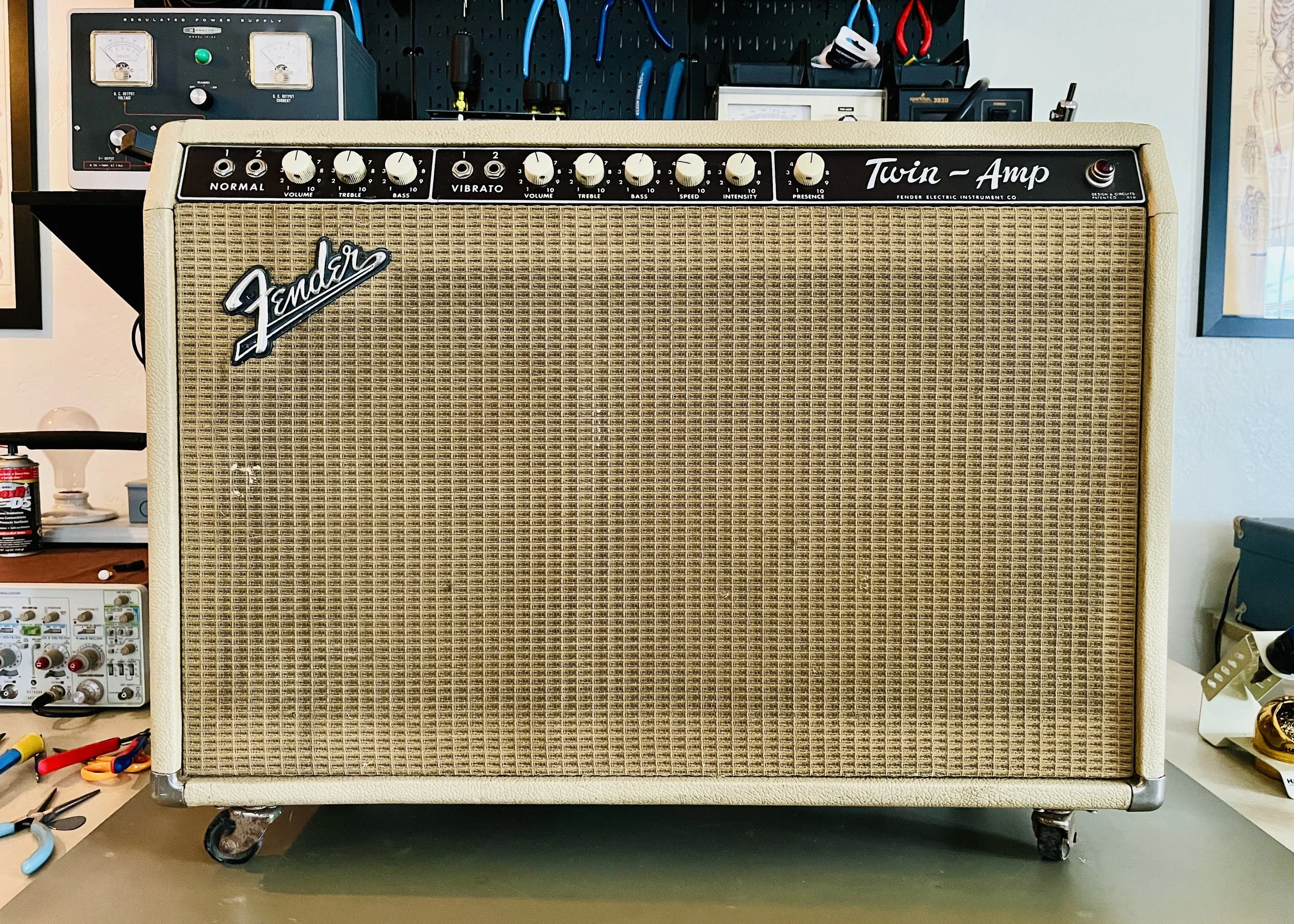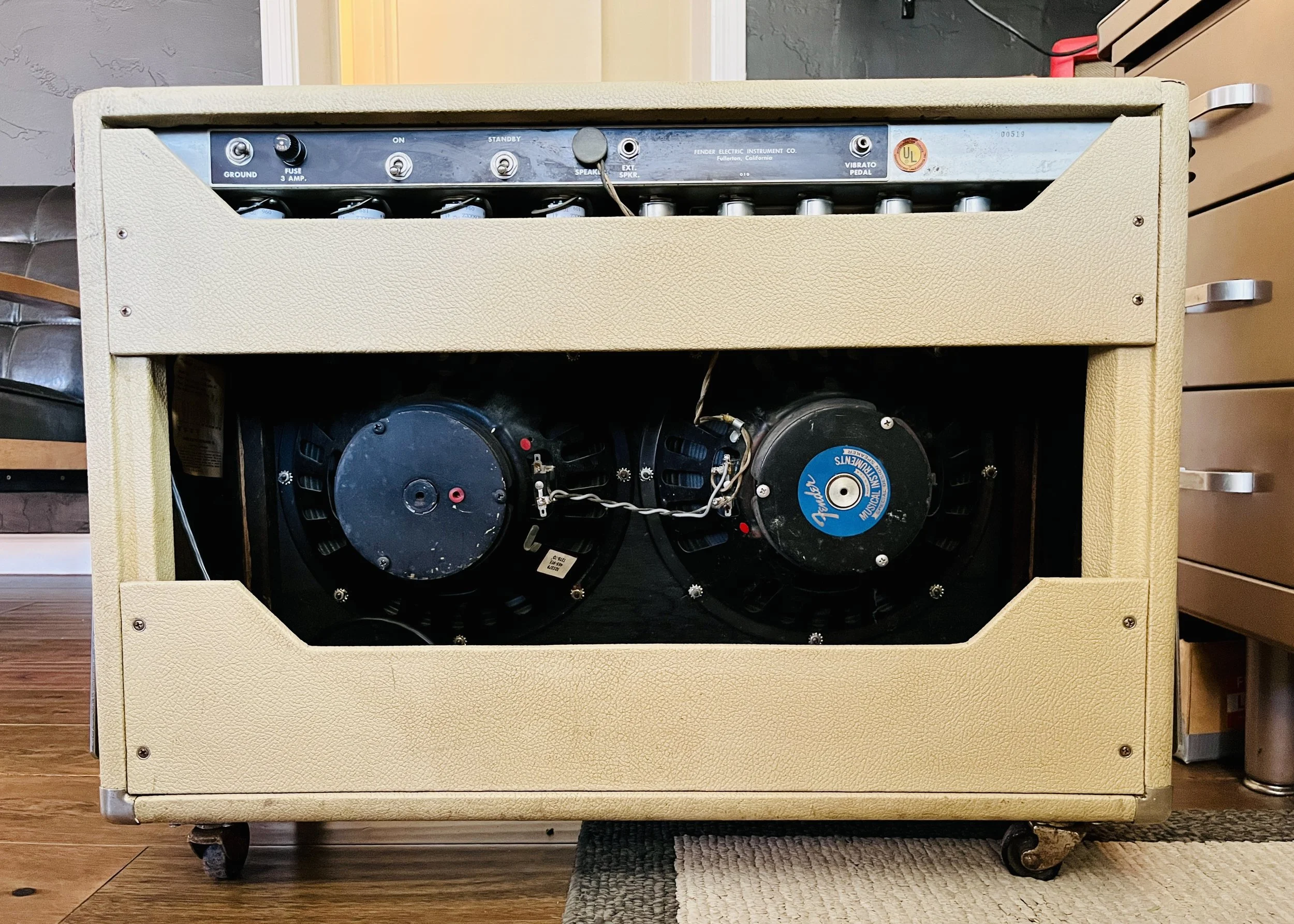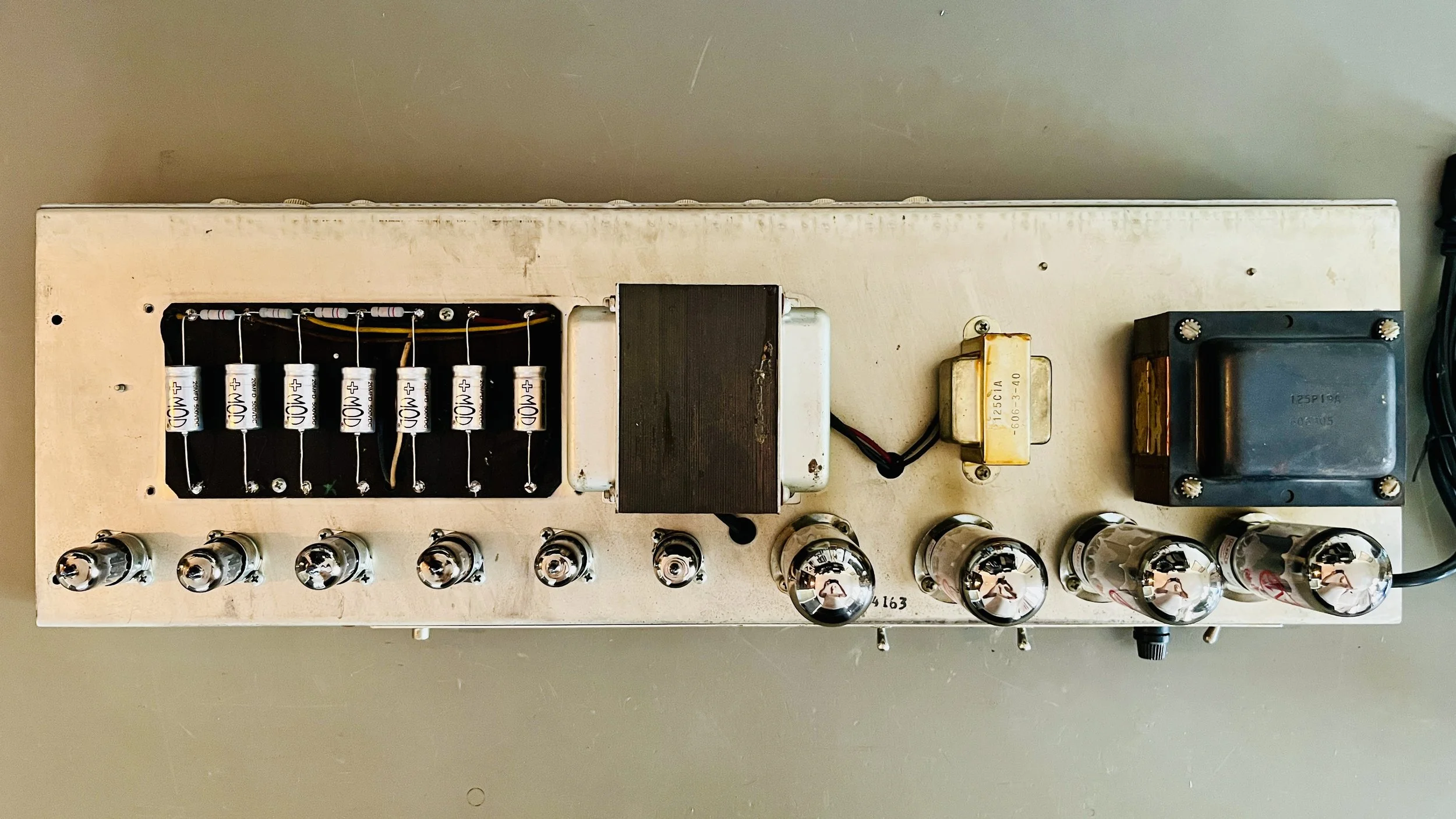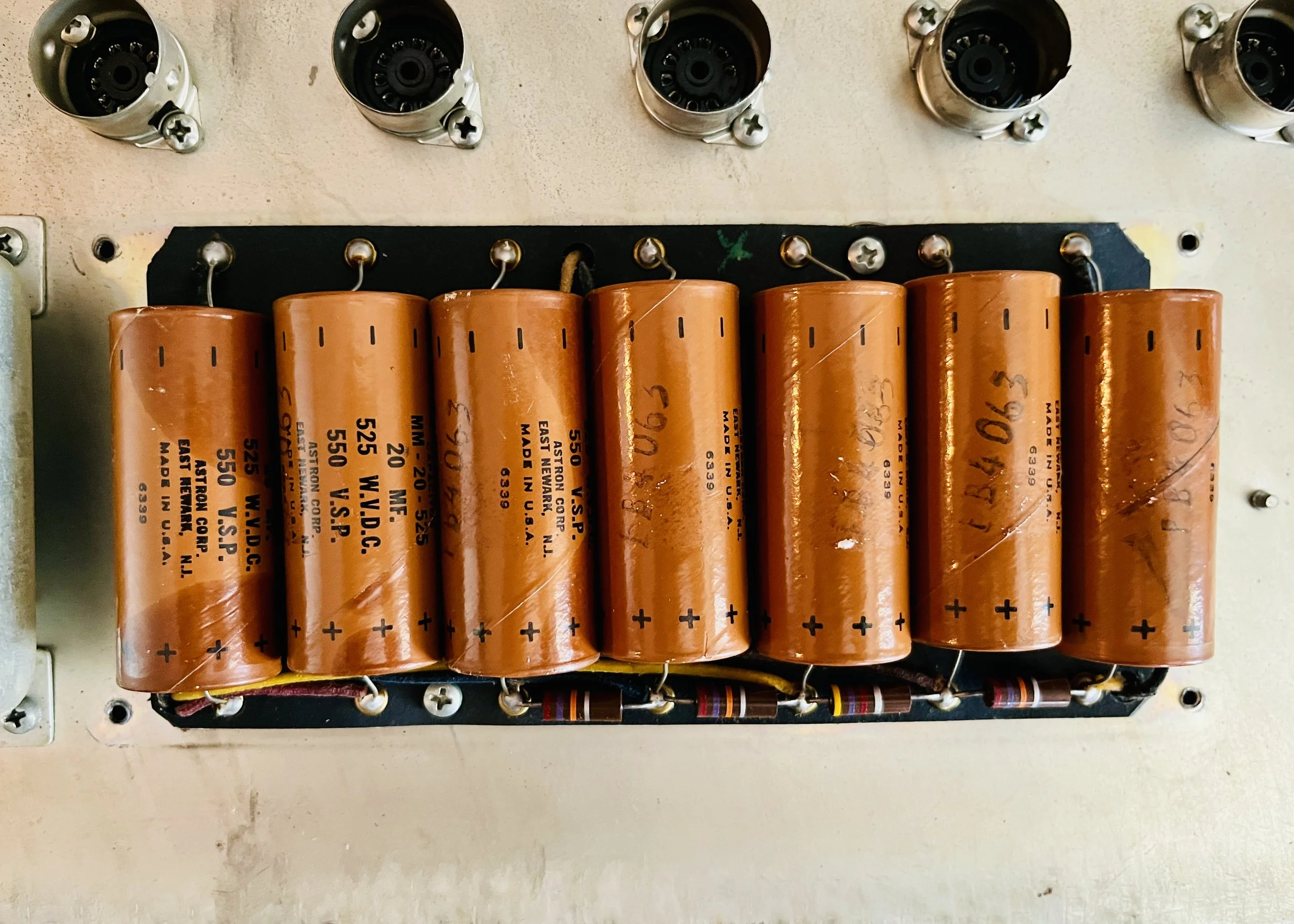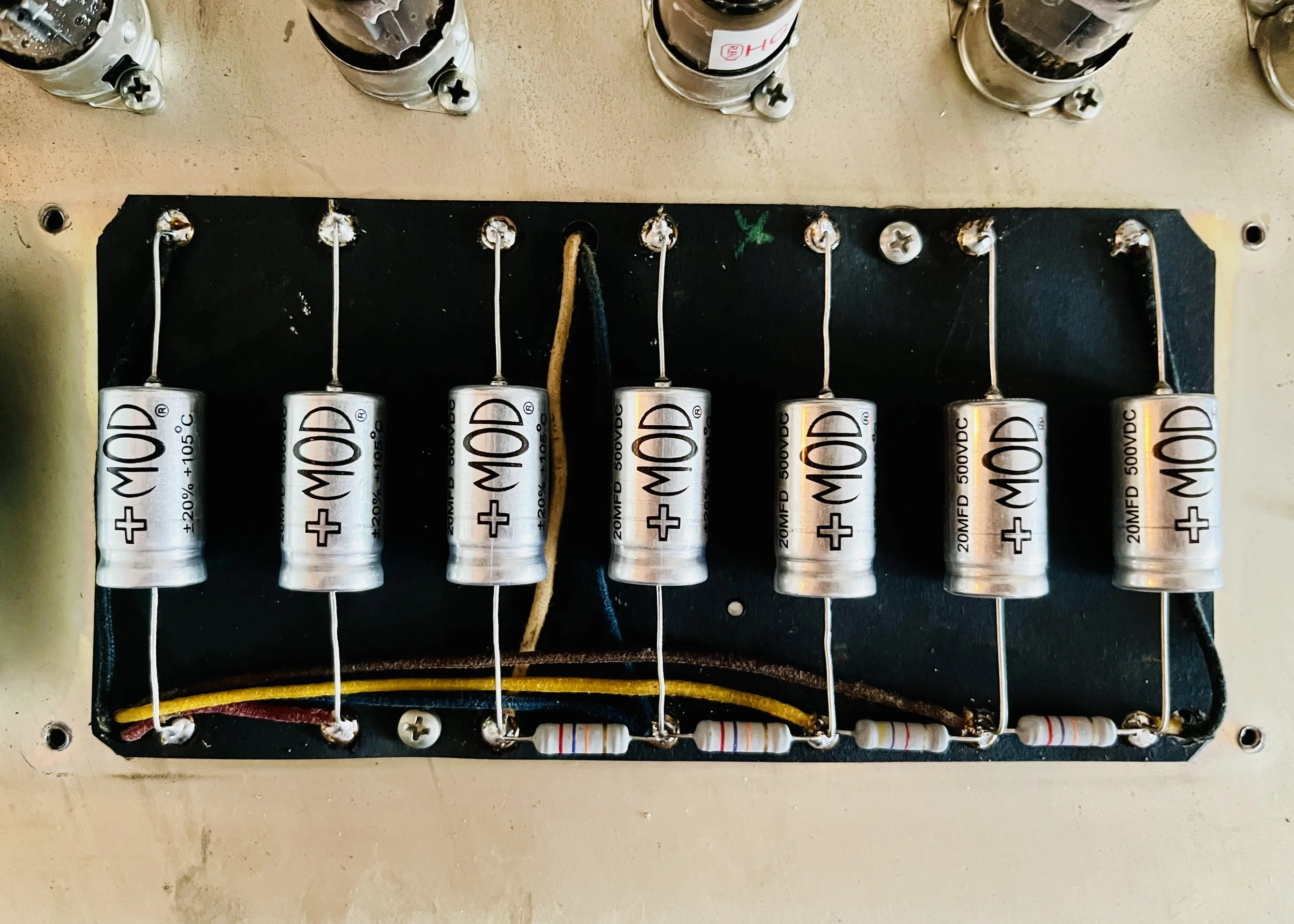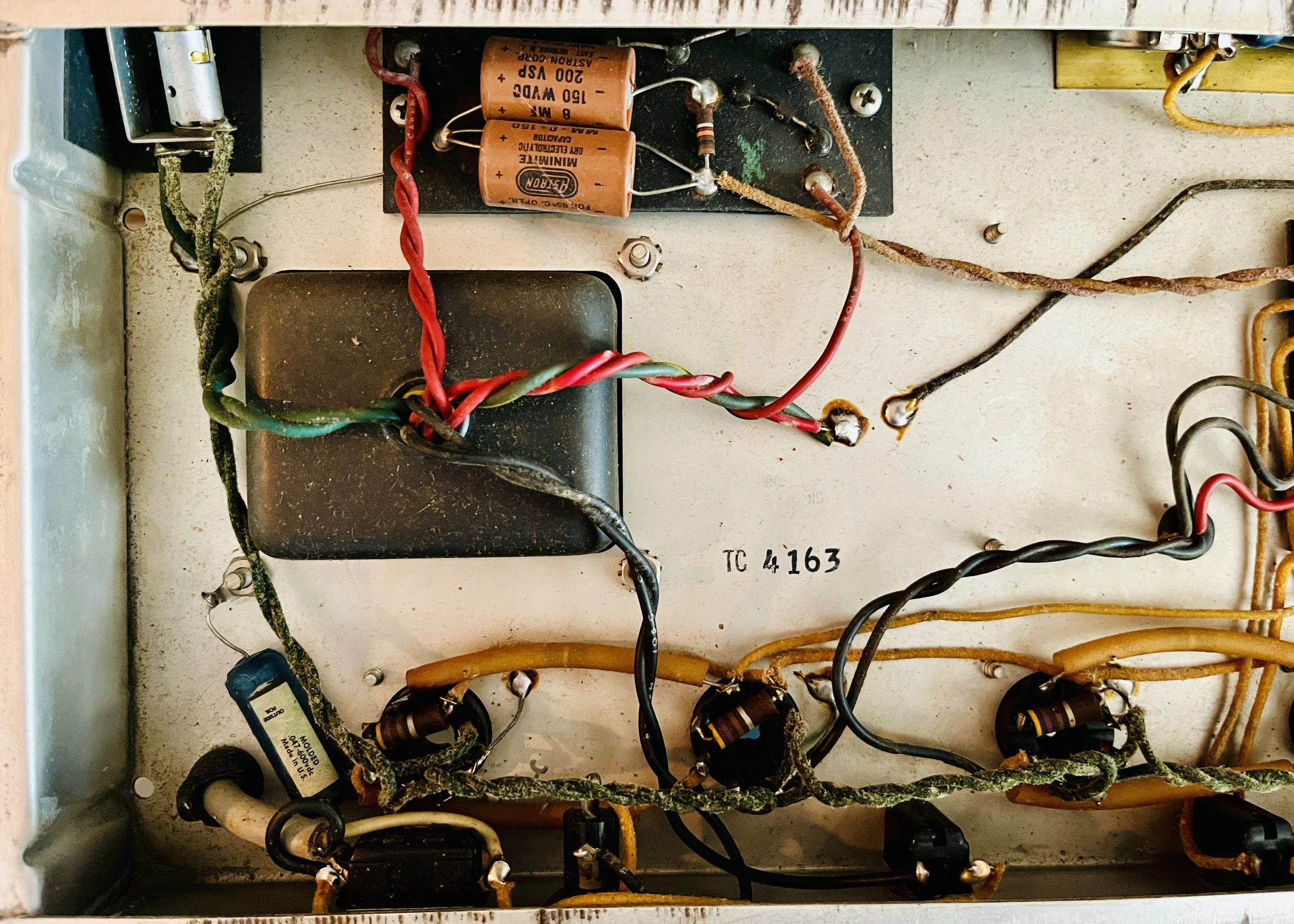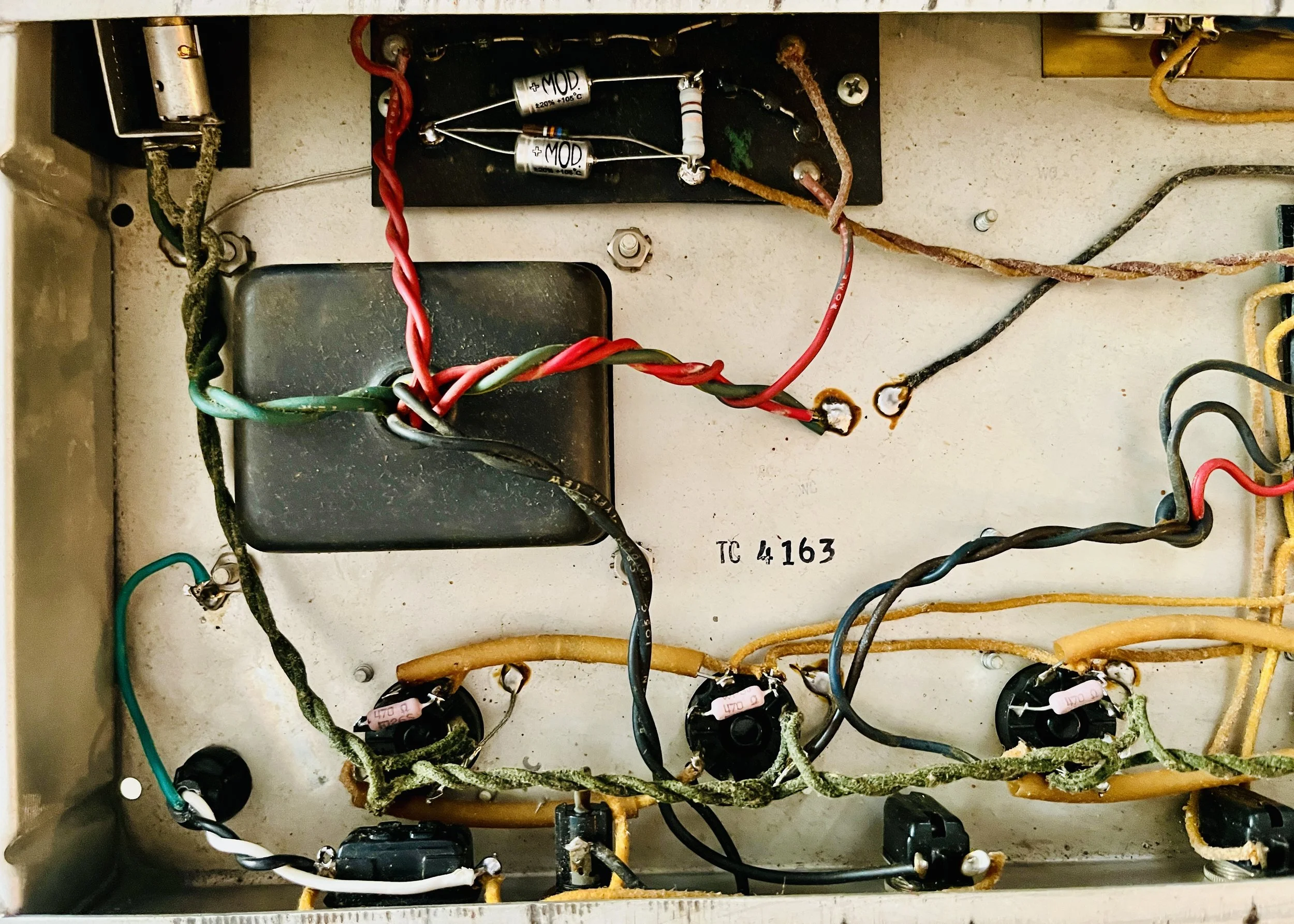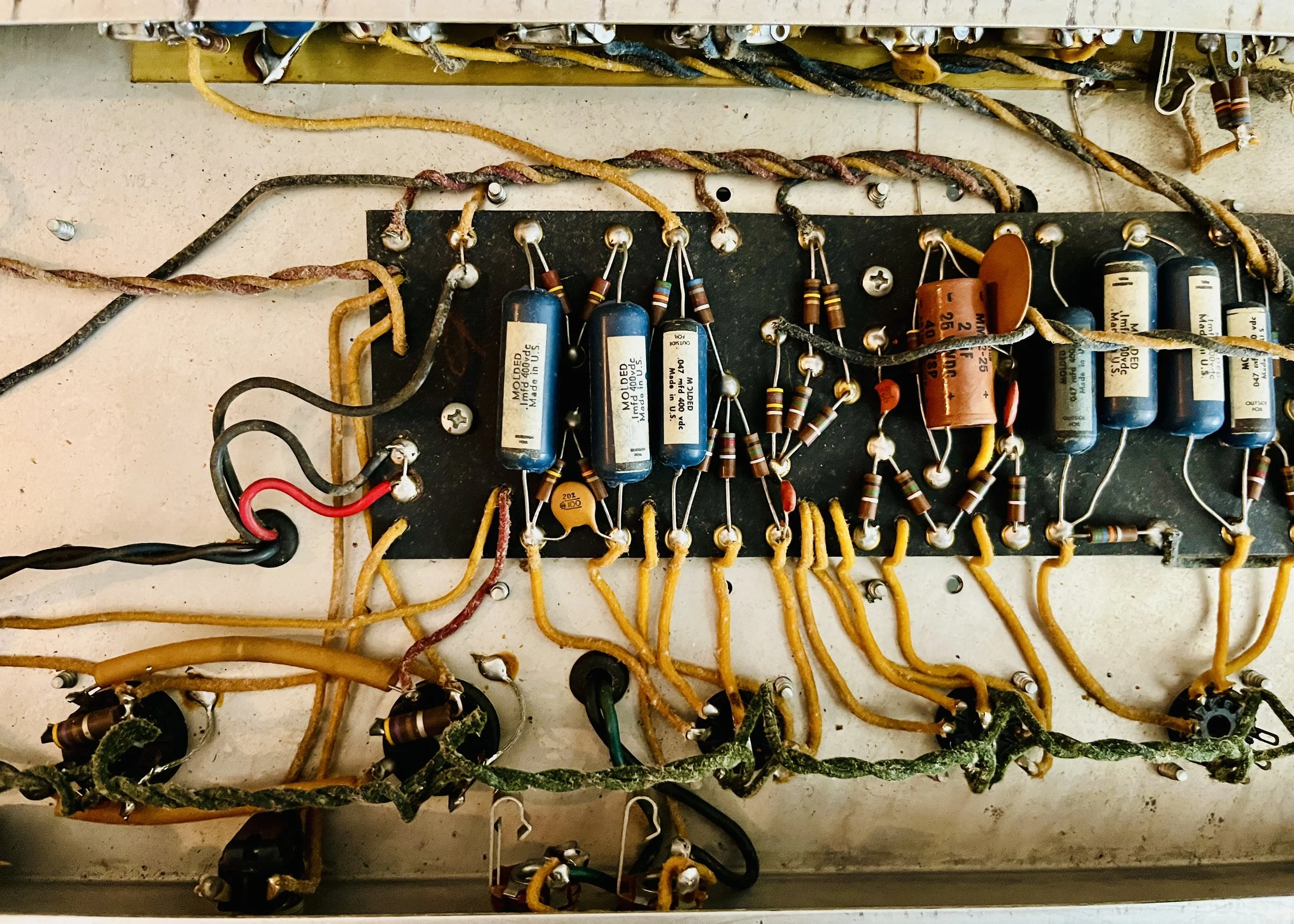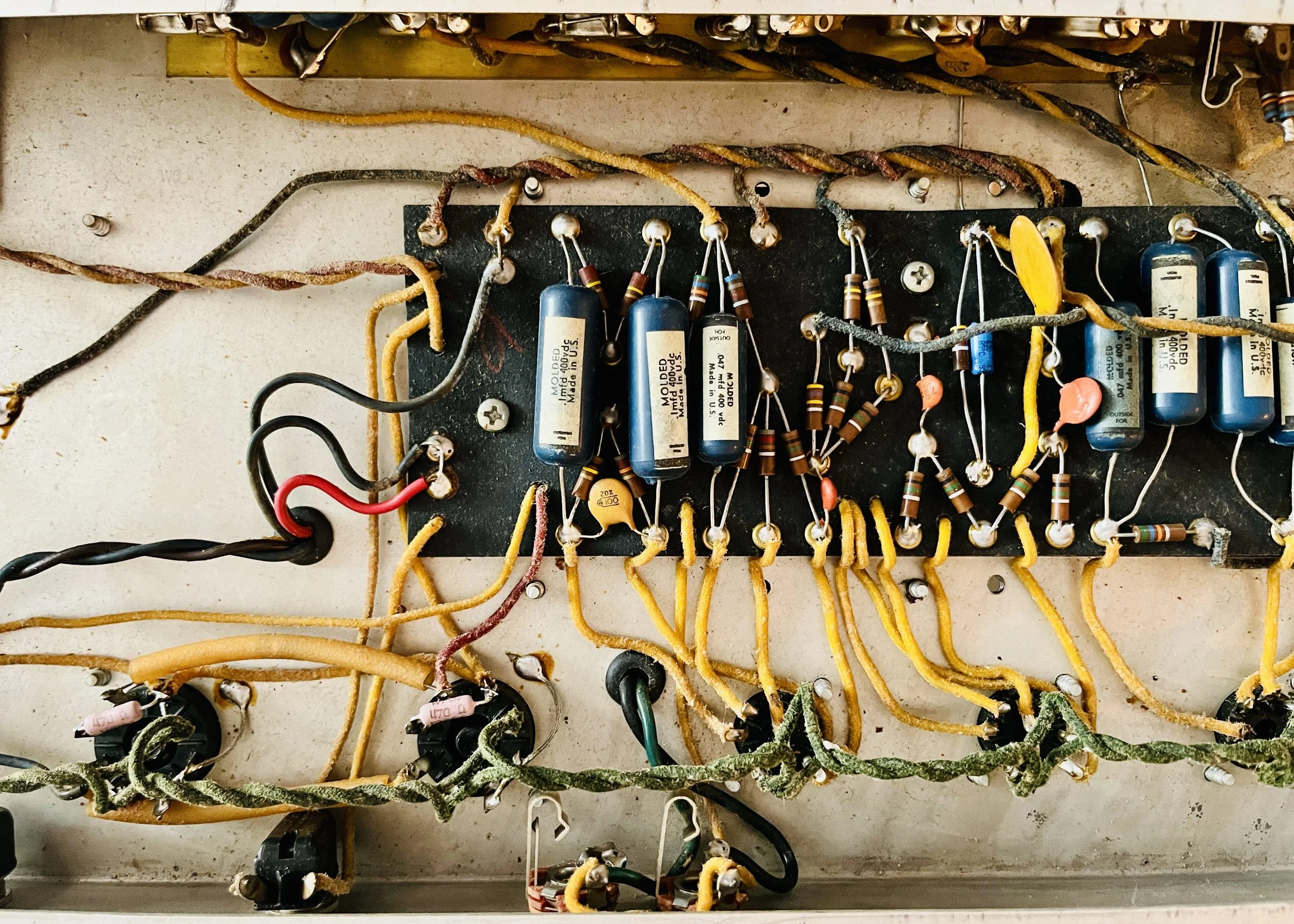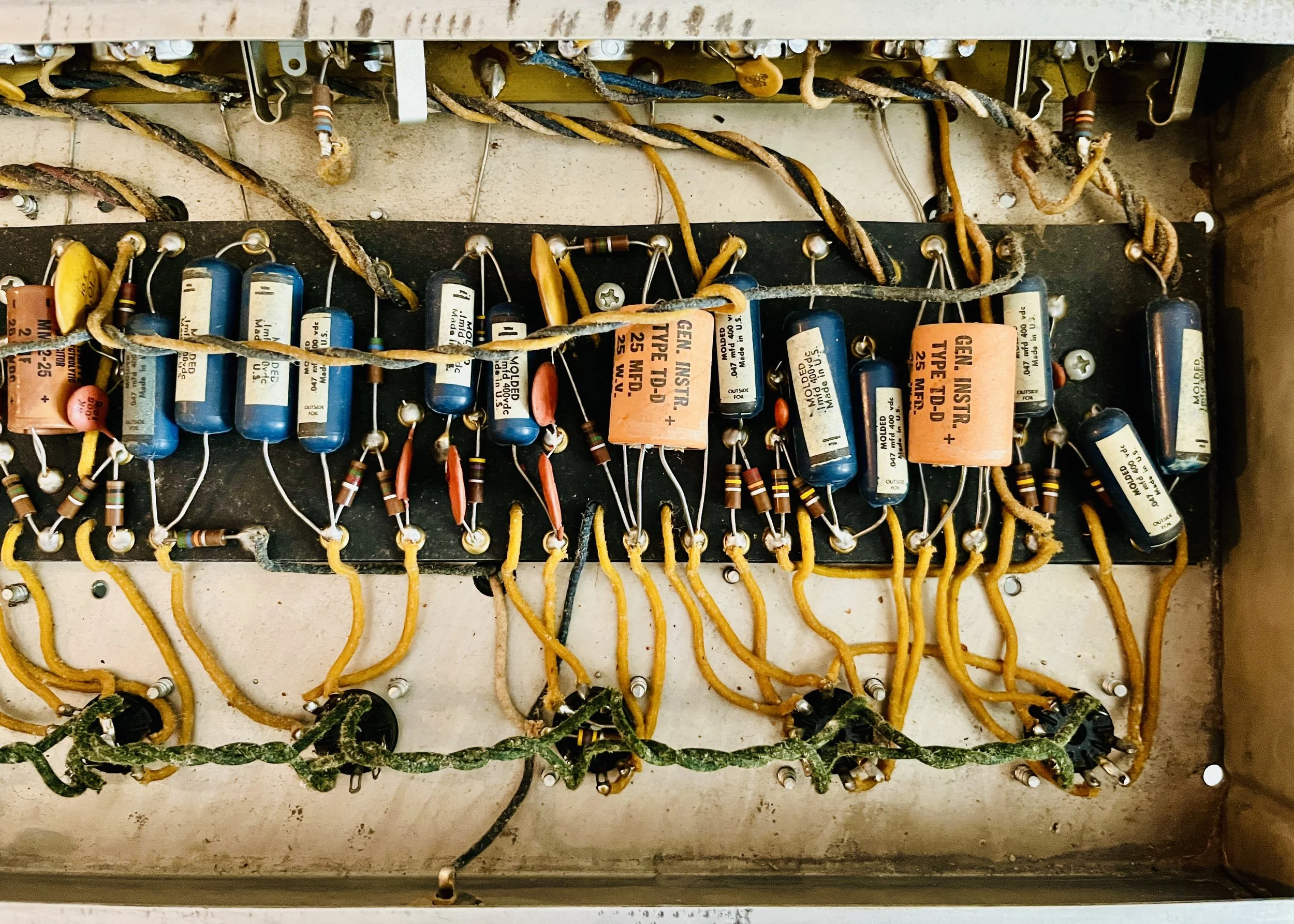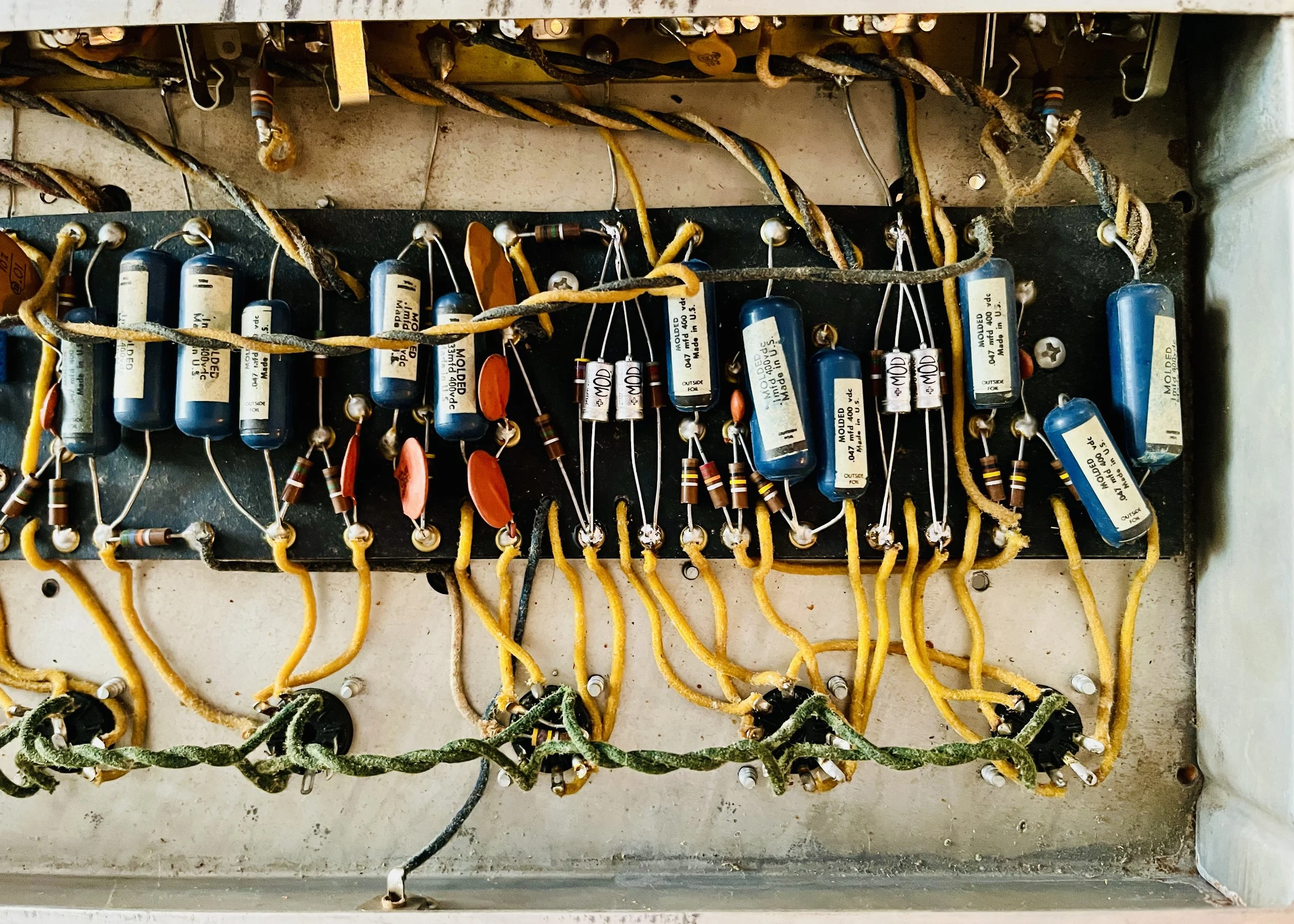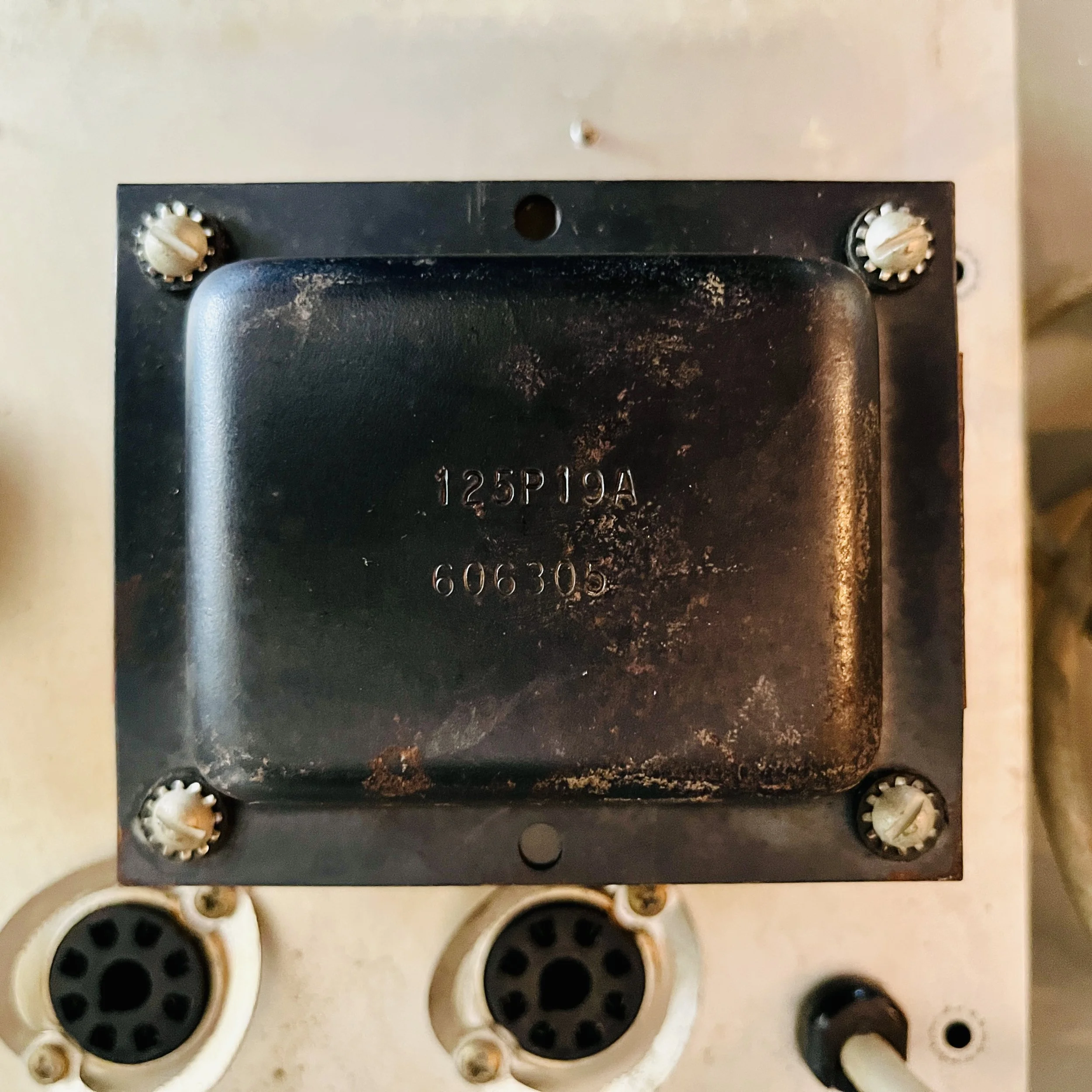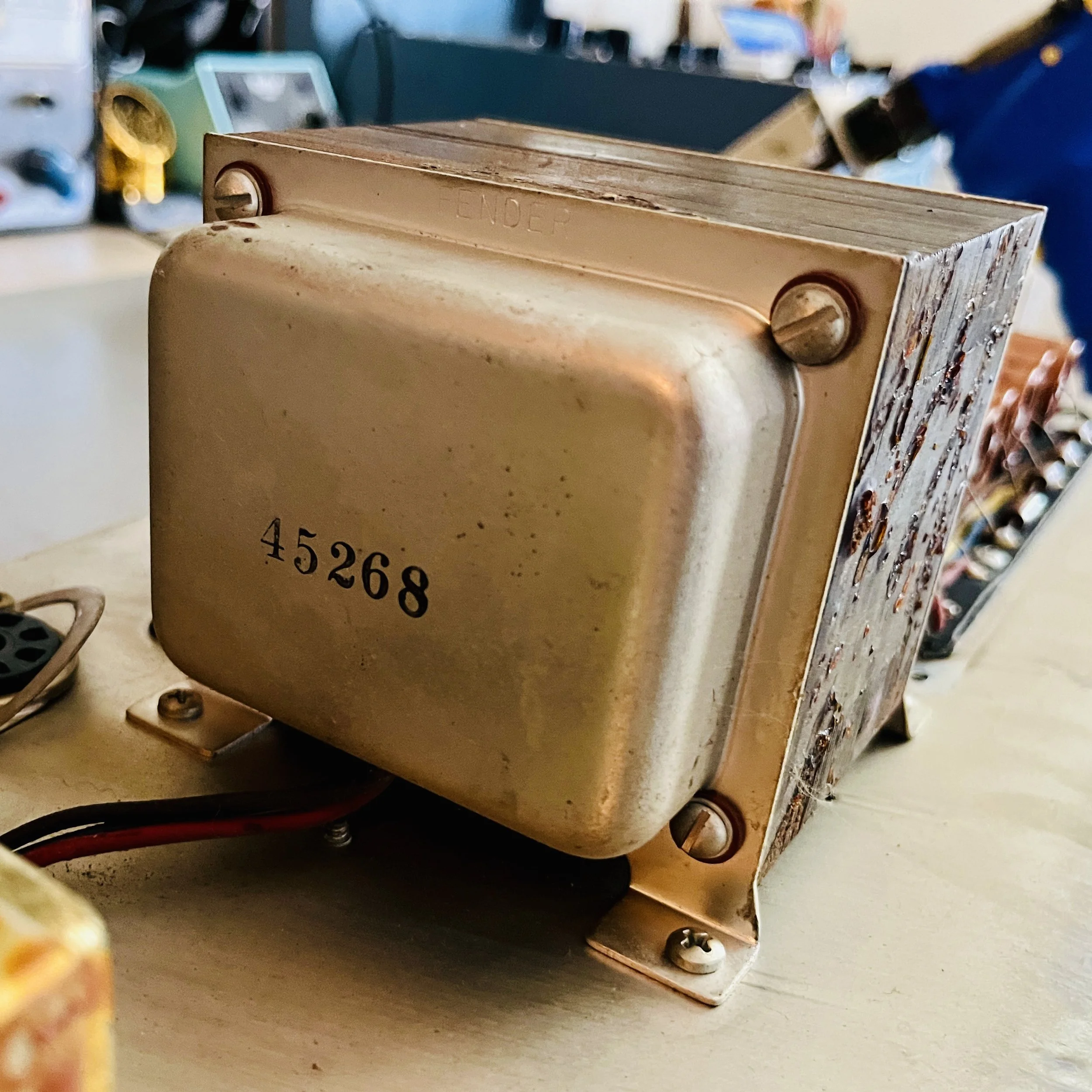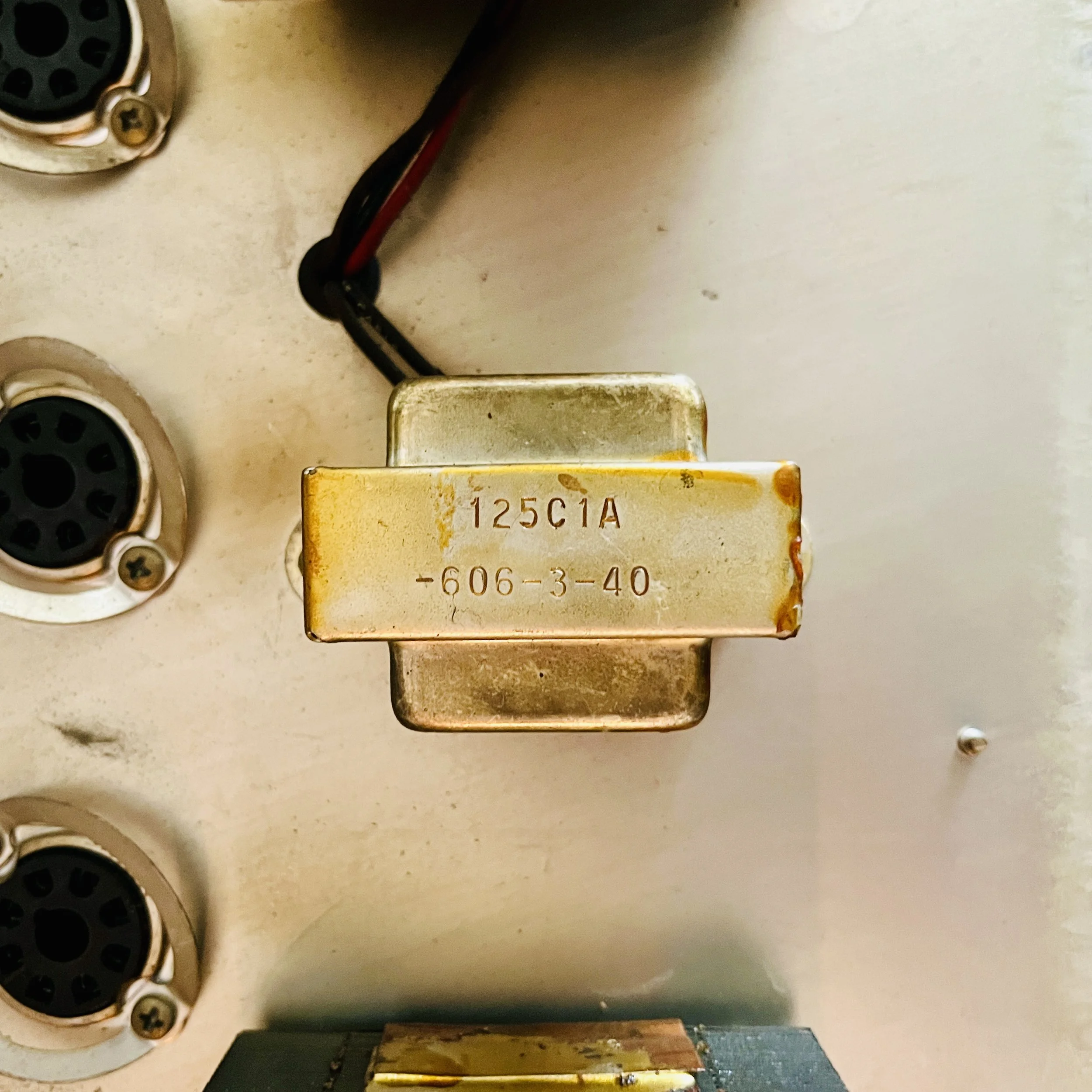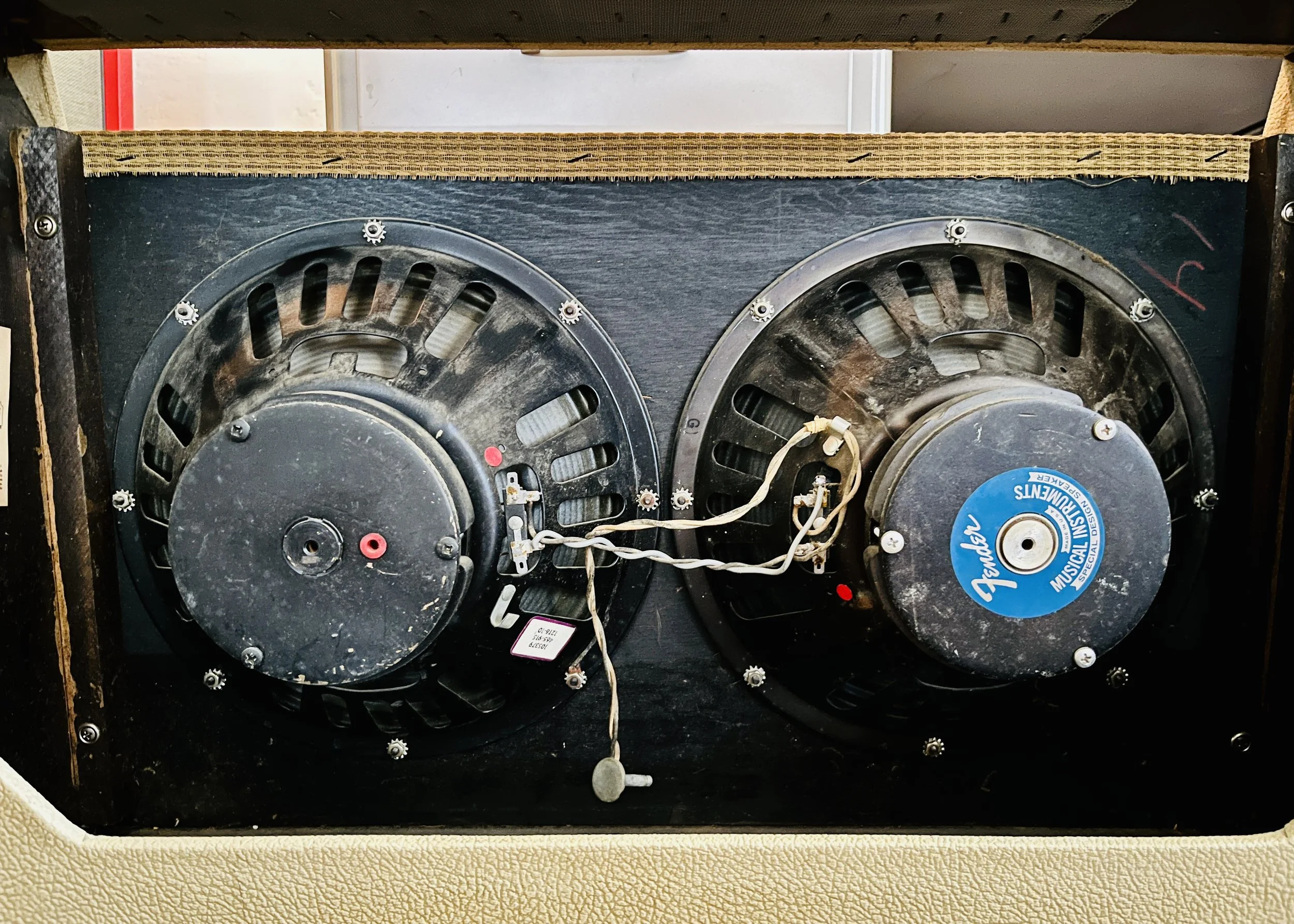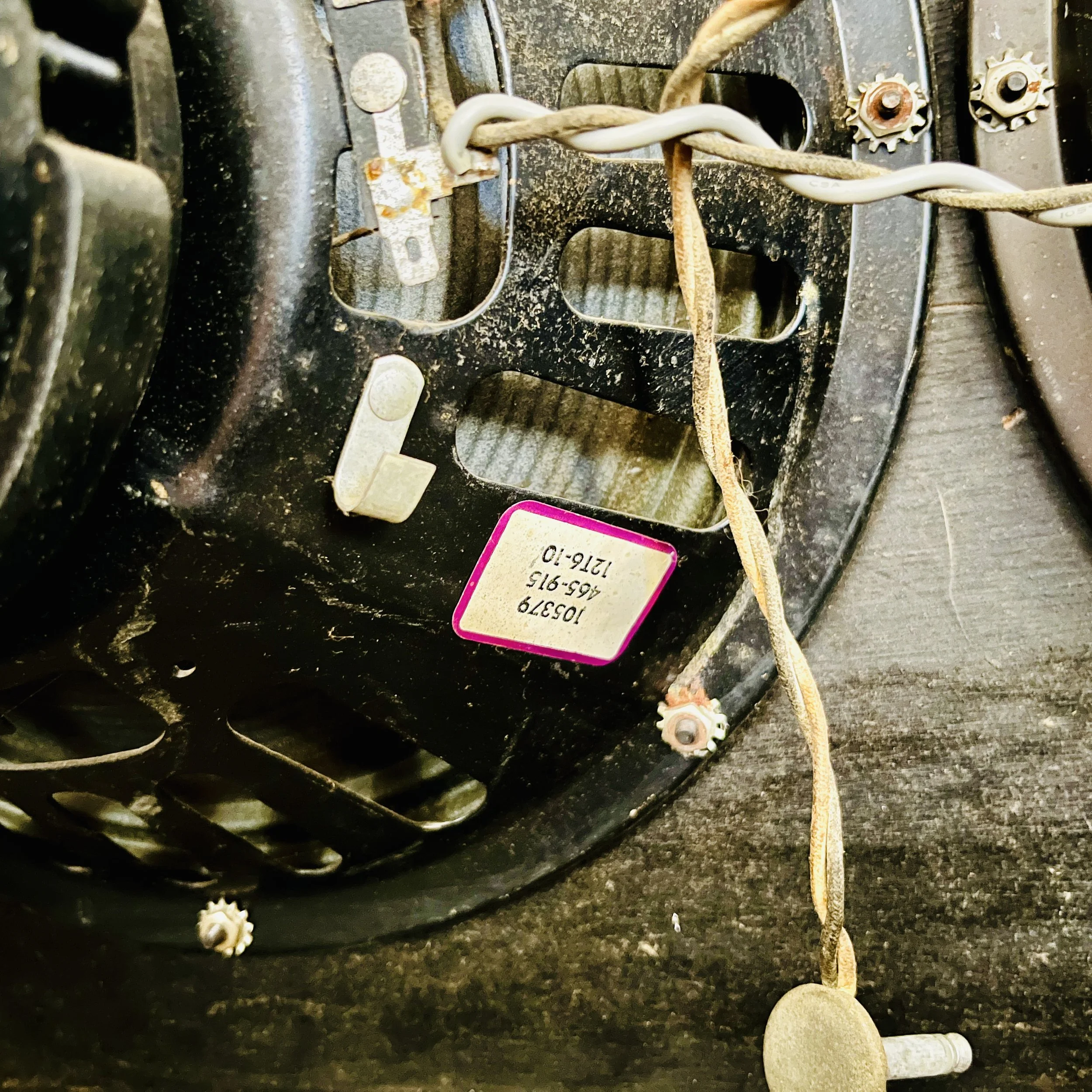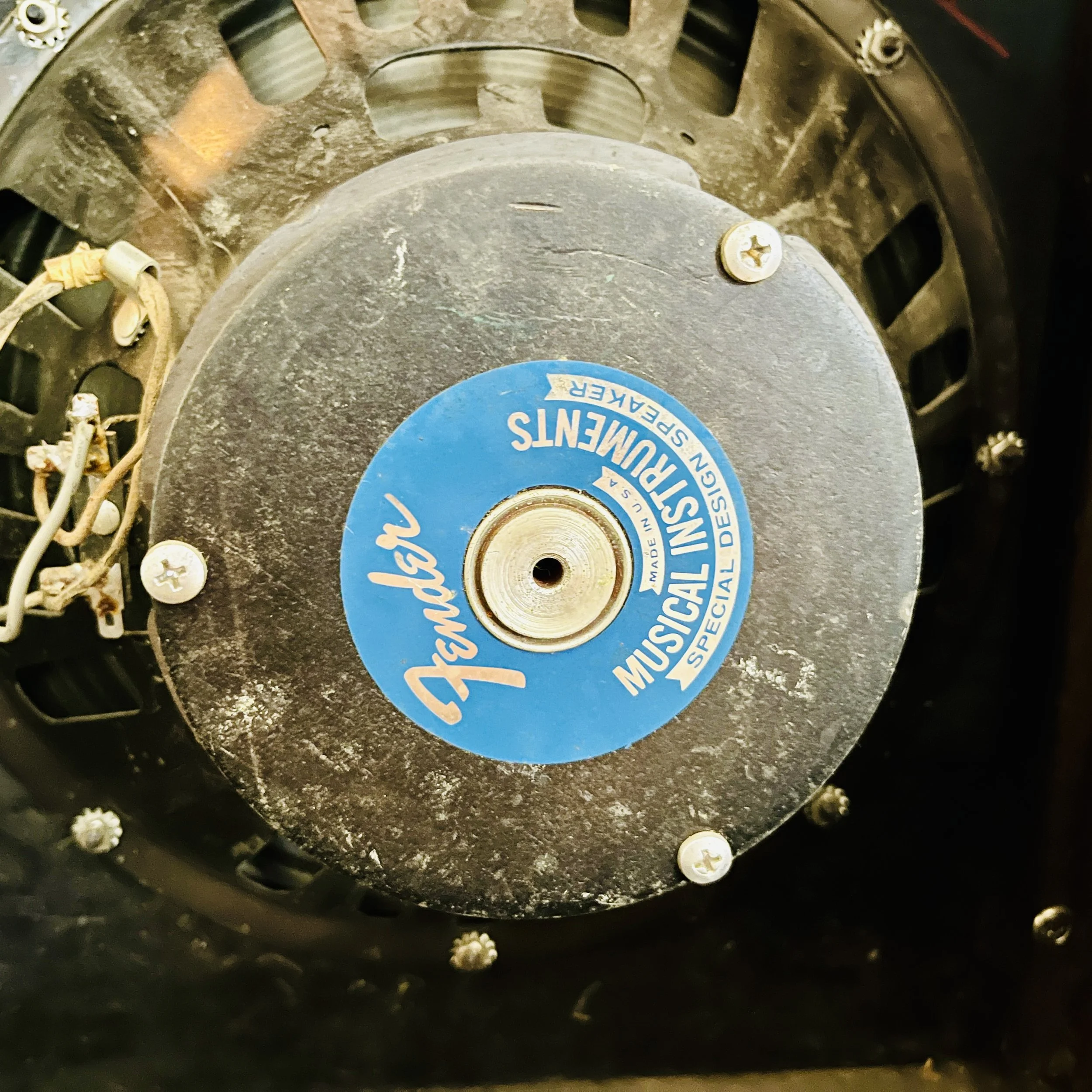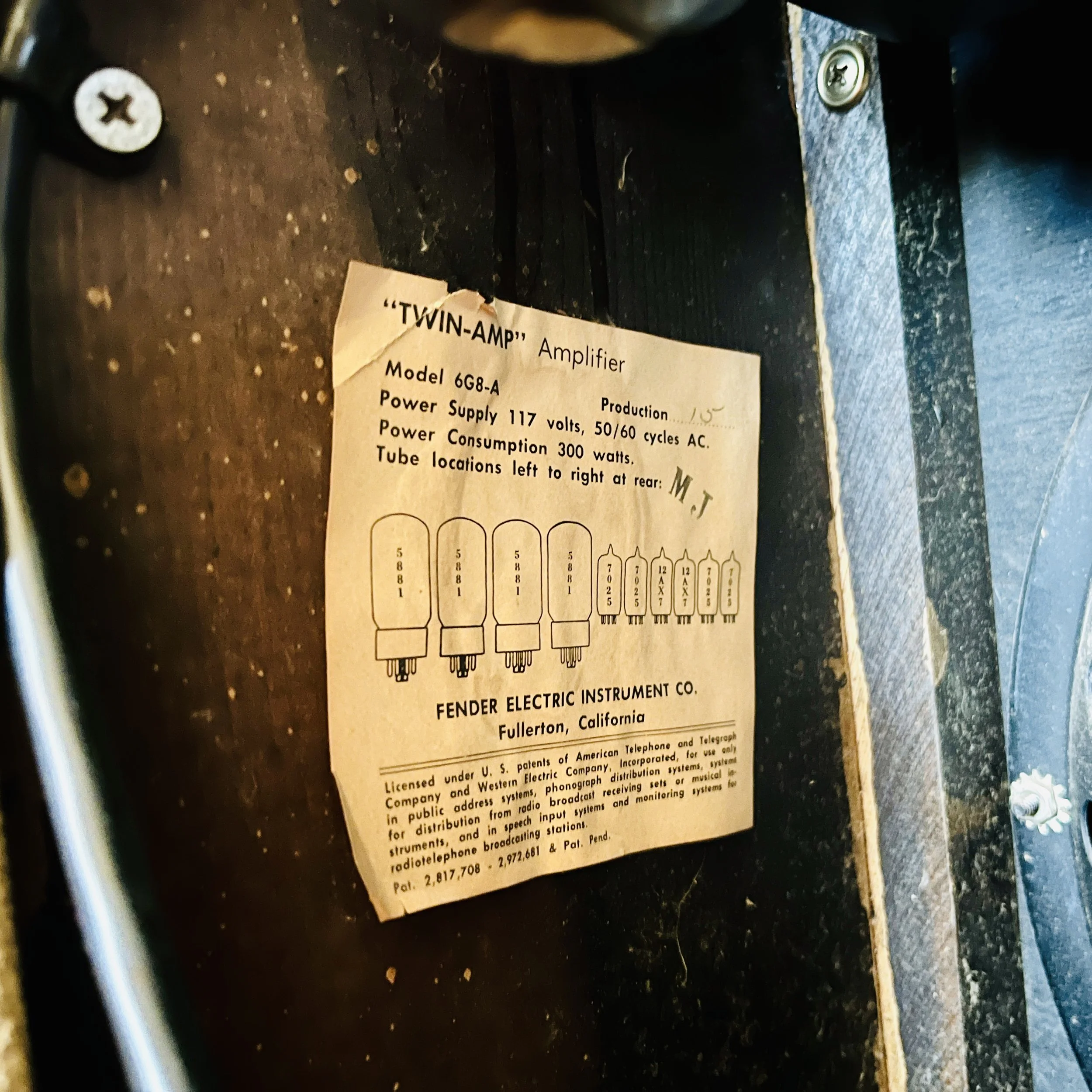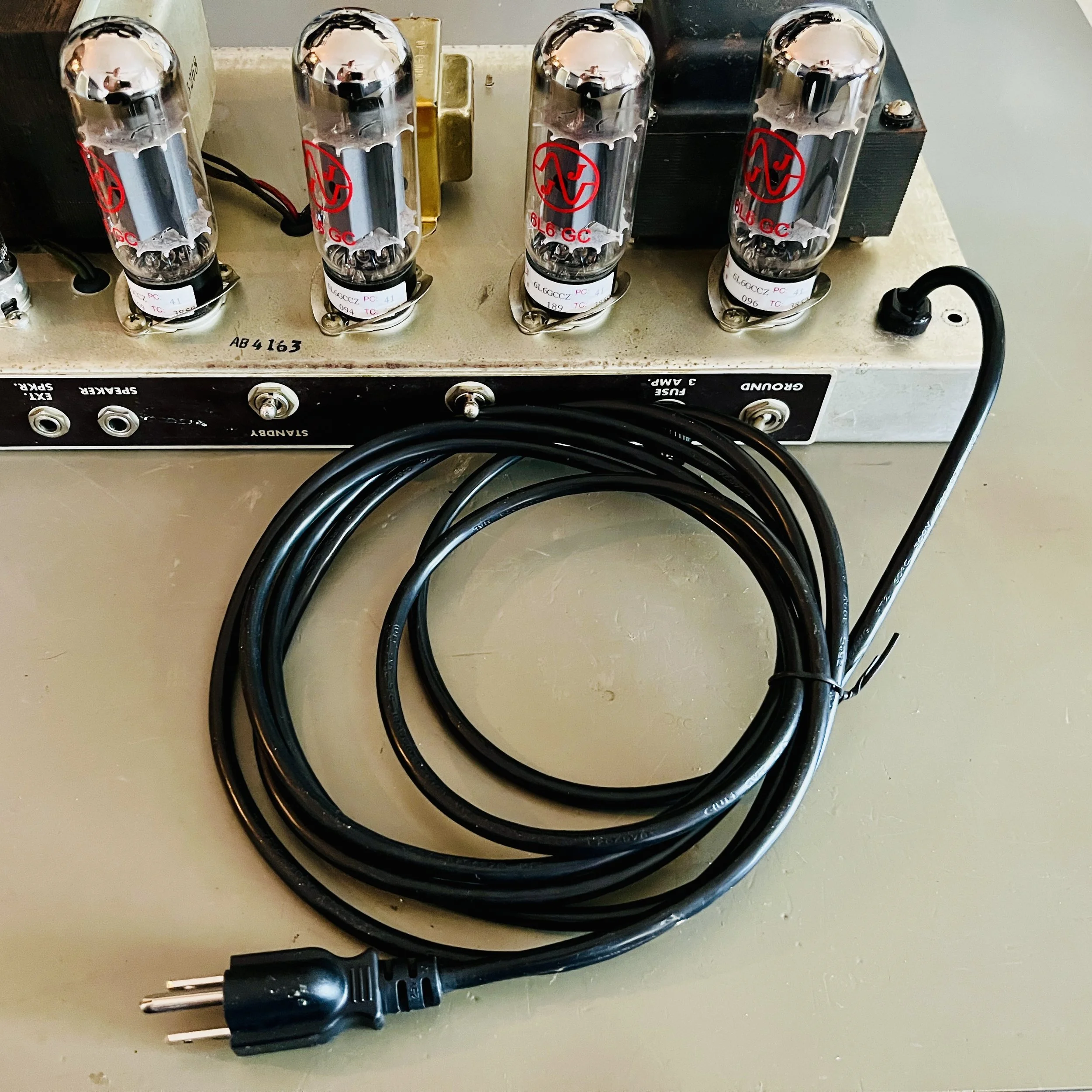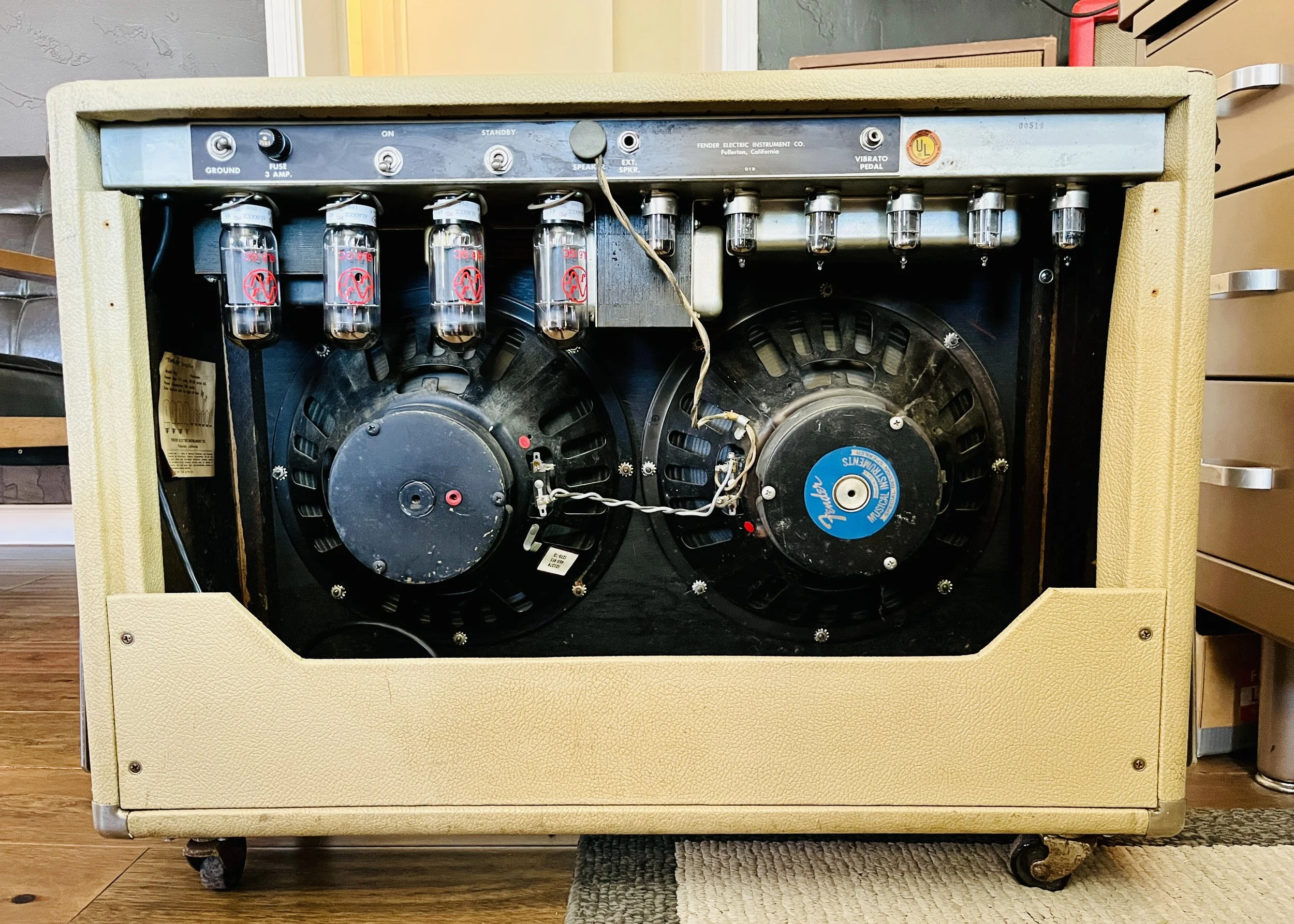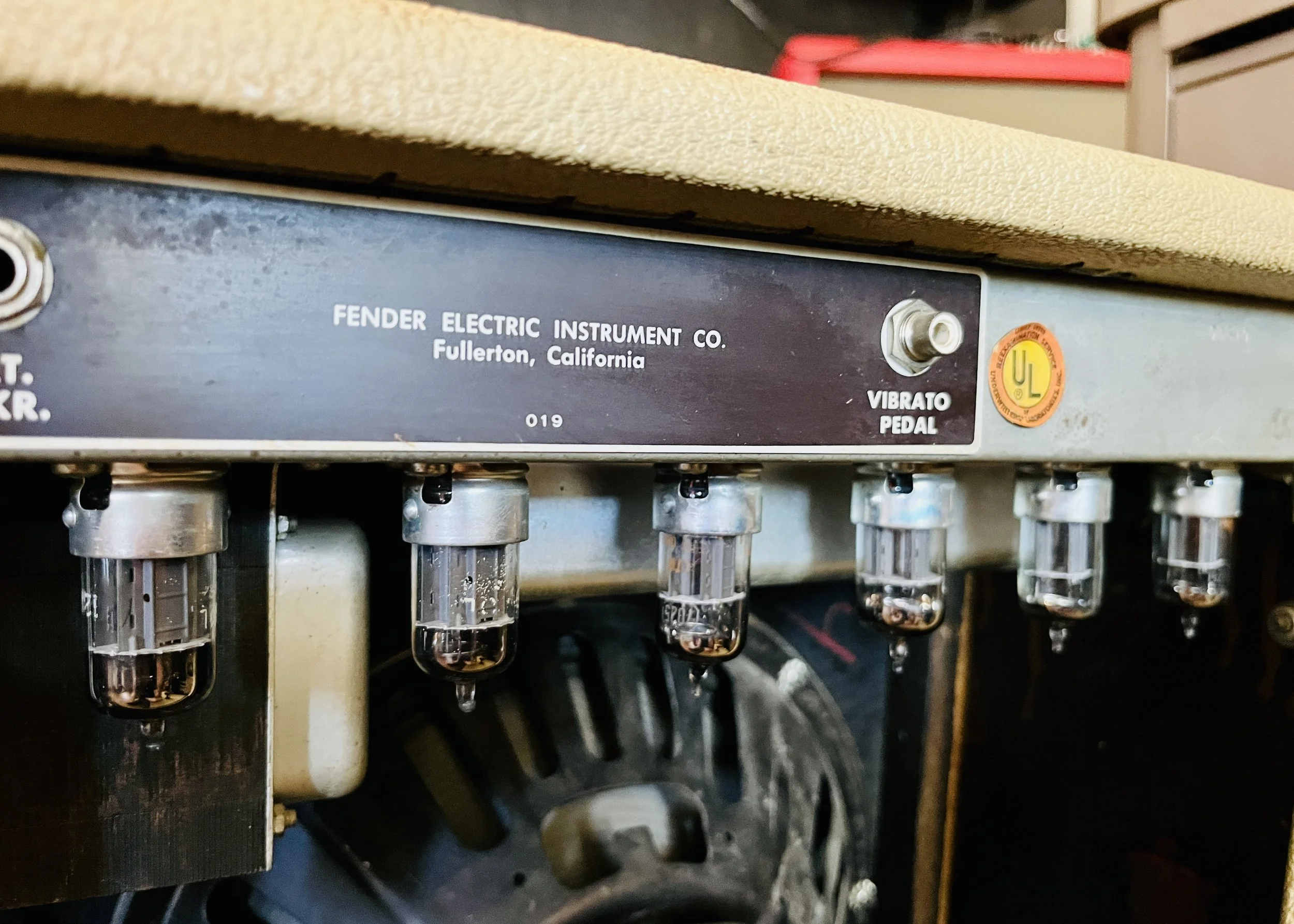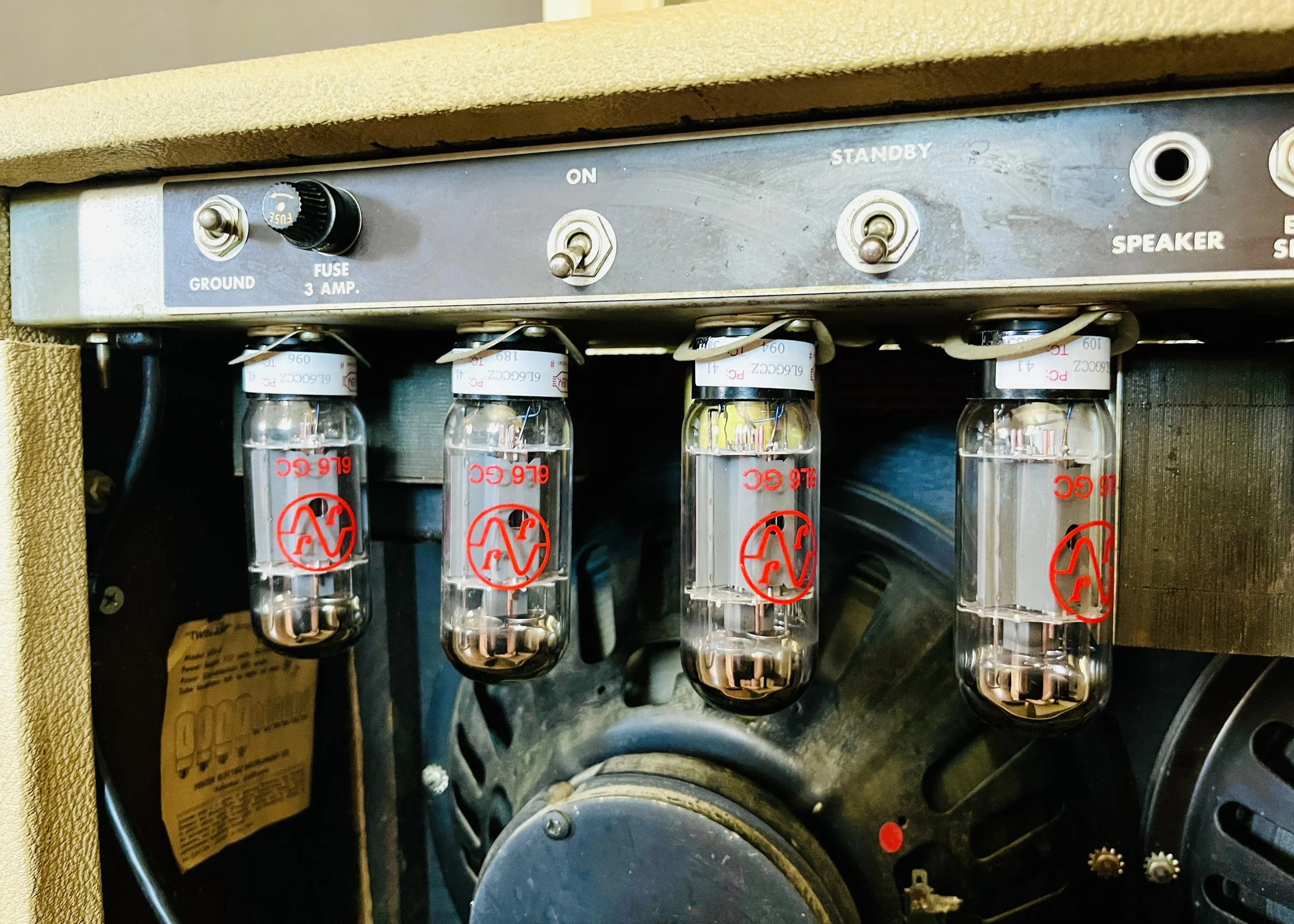1963 Fender Twin
The short-lived Brown-Panel/Blonde era of Fender amps were produced from 1960 through 1963. They are often considered tonally right in-between the more famous Tweed and Black-Panel circuits we are all familiar with. The Brown/Blonde era was the first time Tolex would be applied to Fender amps, and cosmetically appearing closer to the often re-issued Black-Panel and Silver-Panel models. The changes to the circuitry included the move to cleaner more hi-fi sounding tone, two preamp channels with individual tone stacks, Fixed Bias output stages, Long-Tailed Pair Phase Inverters, and the increased use of Negative Feedback. In 1953 this amp started off as the Wide-Panel Tweed Twin-Amp, it had 25 Watts of power and 2 x 12” speakers. This Brown-Panel 6G8-A Fender Twin-Amp comes in at 80 Watts RMS, with a quad of 5881 or 6L6GC power tubes, has 2 x 12” Oxford branded speakers, two-knob Treble/Bass tone controls per channel, and the rare and hypnotizing Harmonic Tremolo.
Harmonic Tremolo sounds like a mix between a Phaser and your traditional Fender style Tremolo heard in most 50’s, 60’s, and 70’s Fender models. It is an amazing sounding effect, but it did not last long in Fender’s catalog because of the complexity of the circuit. It takes three separate 12AX7 tubes to create the effect and had a high parts count along with it. Essentially it modulates each half of the guitar signal through a high-pass and low-pass filter creating both Phase Modulation and Amplitude Modulation at the same time. It can only be found in Brown-Panel or Blonde Vibrasonic, Bandmaster, Super, Pro, Concert, Twin, and Showman amps made between 1959 and 1963. The final straw for Fender’s production of the Harmonic Tremolo effect was when they realized they could fit both Optical Tremolo, and more importantly Spring Reverb, into the same chassis/eyelet board space while using the same amount of tubes and essentially the same parts count. Fender correctly believed that the Spring Reverb effect would be the big seller for their next lineup and that guitarists wouldn’t mind the change to the fantastic sounding, but slightly less magical Opto-Coupler driven Trem circuit. Optical Tremolo became the mainstay for Fender’s lineup through the 60’s and 70’s, with a couple of the smaller wattage amps like the Princeton and Vibro Champ retaining the tweed-era Bias Modulating Tremolo effect. Notable users include: Joe Bonnamasa, and Judah Bauer of The John Spencer Blues Explosion.
This amp came in to my shop in almost completely original condition. The electronics were untouched upon arrival and original. The speakers were replaced in the 1960’s with Oxford 12T6 Ceramic units which complement the amp nicely, and some handles were added to the sides of the cab. Aesthetically this amp was in great condition, but it had leaking filter caps and some heat damaged resistors. Relatively light issues for a 60+ year old amp that had never been serviced. It needed a full restoration including a cap job, new power dropping/screen resistors, 3 prong AC cord conversion, and a good cleaning.
Amp was completely restored. All filter/bias/bypass caps were replaced with upgraded voltage and temperature rated MOD/Vishay brand electrolytics. New 2 Watt Metal Oxide power dropping resistors were installed due to heat damage and for better reliability and lower noise floor. All screen resistors were replaced with 3 Watt Cement 470 ohm type units for same reasoning. A new 3AG Fuse was installed as the one present was the wrong value. A new 3 Prong AC cord was installed to replace original 2 Prong unit present and the death cap was removed rendering the Ground switch non-functional. This was done to make bring the amp up to modern safety and electrical code.
The original tubes (a mix of NOS and new) tested good and were kept in place. This was the final lineup: V1/V2/V4= RCA 7025, V3 = RUBY 12AX7, V5/V6 = TUNGSOL 12AX7A, V7-V10 = JJ 6L6GC Matched Quad. The 6L6GC’s Fixed Bias was set to Factory Spec with a B+ of 410VDC. The tube sockets were re-tensioned to stop the tubes from jiggling or falling out while they hang upside down and they were all treated with De-Oxit to remove/prevent corrosion. The pots were sprayed out and the amp was cleaned inside and out. A rare and excellent example of a Brown-Panel Fender Twin.

